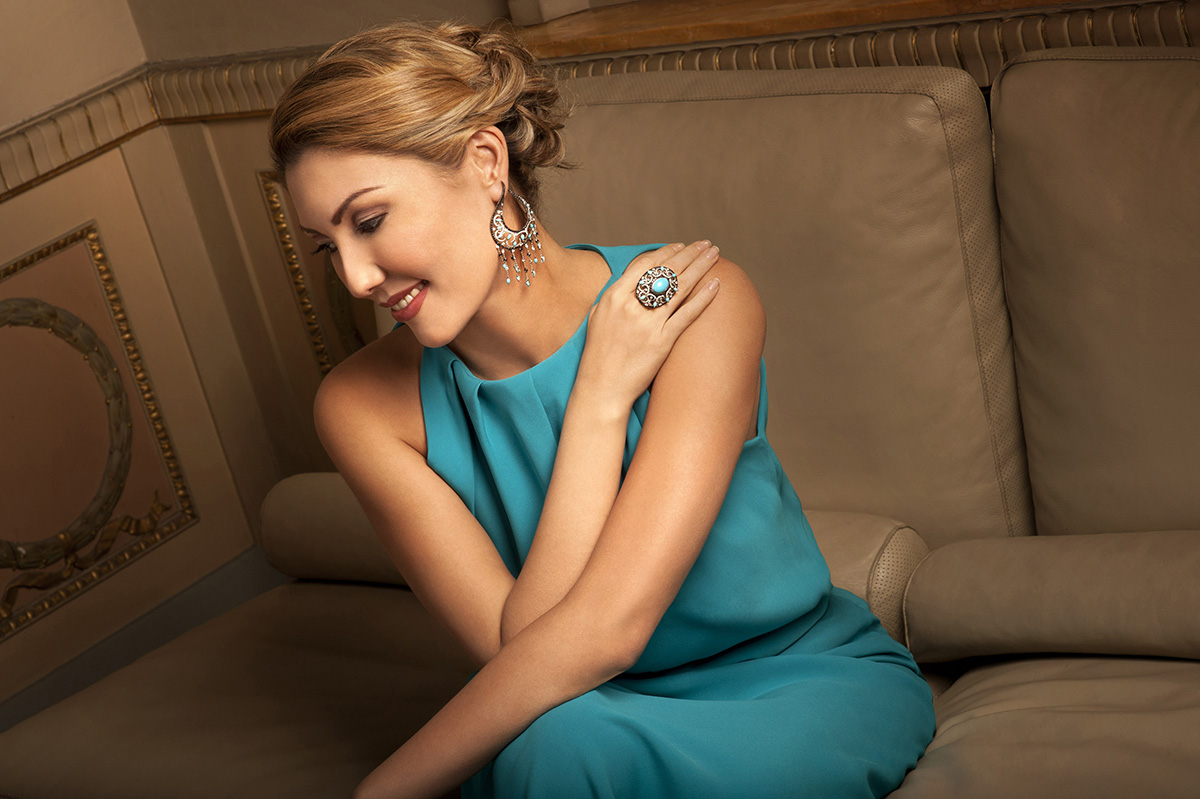
An image from the first Alsara by Damiani campaign with Aliya Nazarbayeva wearing earrings and ring with turquoise and black-and-white diamonds
How does a historic Italian jewellery brand come to dedicate an entire collection to the traditions and culture of Kazakhstan? Through a little bit of serendipity, and some inspiration from one of the world’s ancient nomadic cultures, as LUX Editor-at-Large Gauhar Kapparova discovers
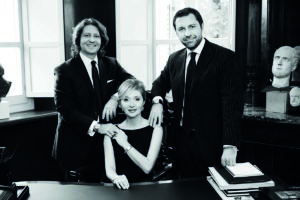
Guido, Silvia and Giorgio Damiani
Italian fine jewellery brand Damiani first opened stores in Almaty and Astana in 2005, following the brand’s strategy for global expansion under the leadership of third-generation Damiani family members, Guido, Giorgio and Silvia. The brand’s sensuous Italian style and commitment to hand-crafted detail quickly captured the attention of Kazakh women, whilst the Damiani siblings, who travel frequently to the country on business, became increasingly fascinated and enamoured by the culture and traditions there. A deep and mutual affection grew organically between brand and country, leading to the idea of a cross-cultural collaboration.
Follow LUX on Instagram: the.official.lux.magazine
To create Alsara, a collection inspired by and dedicated to Kazakhstan, the President’s youngest daughter Aliya Nazarbayeva teamed up in 2011 with Zhanna Kan, the owner of Damiani Kazakhstan and the driving force behind the new line. The name Alsara is a portmanteau combining Aliya and her mother’s name Sara, and pays tribute to the influence of not just them but also all the Kazakh women the jewellers have met.
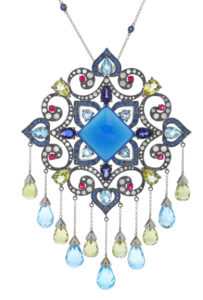
Unique necklace ‘Tumar’ with blue sapphires, rubies, diamonds and semi-precious stones
The collection began as a conversation between Aliya and Damiani’s Italy-based designers, during which Aliya educated the brand on ancient Kazakh ornament, such as the traditional tumar necklace and bilezik cuff. These styles were reimagined and transformed by expert craftsmen in Damiani’s historic ateliers in Valenza, where Enrico Grassi Damiani opened his first goldsmith’s laboratory in 1924. The result was a collection of intricate gold and precious stone pieces, marrying refined Italian craftsmanship with Kazakh heritage. Following a sold-out range, the collection broadened to include silver and semi-precious stones, such as onyx and turquoise, typical of Kazakh jewellery.
Read more: Meet the new creative entrepreneurs
Bridging two distinct cultures, the Alsara collection melds tradition with contemporary fashion. “Alsara pieces became not only stylish accessories for modern Kazakh women but also perfect gifts for weddings and kudalyk, which are the engagement ceremonies,” comments Zhanna Kan. “They are regarded as family jewels to be preserved and handed down.”
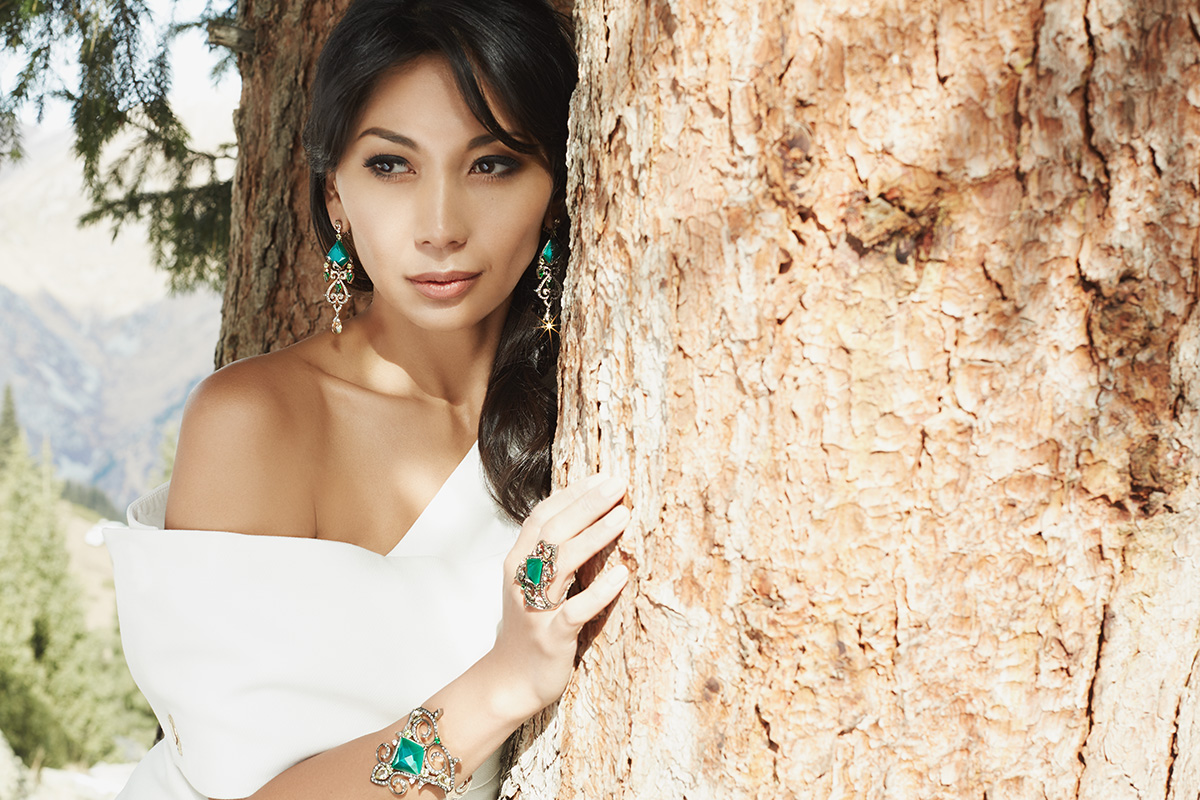
The Alsara by Damiani campaign with Gulnara Chaizhunussova wearing silver earrings and a bracelet and ring with green agate, citrine and diamonds
Alsara’s most recent designs reveal a striking modern look for the collection, reflecting the evolving cosmopolitan culture of Kazakhstan. Colourful gemstones have been replaced with black and white diamonds, producing a pared-back aesthetic with hints of Art Deco and oriental motives. The Kazakh heritage has not been lost, however, and neither has the craft; the collection continues to be entirely handmade in Italy whilst the influence of traditional Kazakh jewellery remains in the threads of delicately curved silver, drawing on artisanal methods of filigree.
Discover the collections: damiani.com
This article was first published in the Winter 19 Issue.
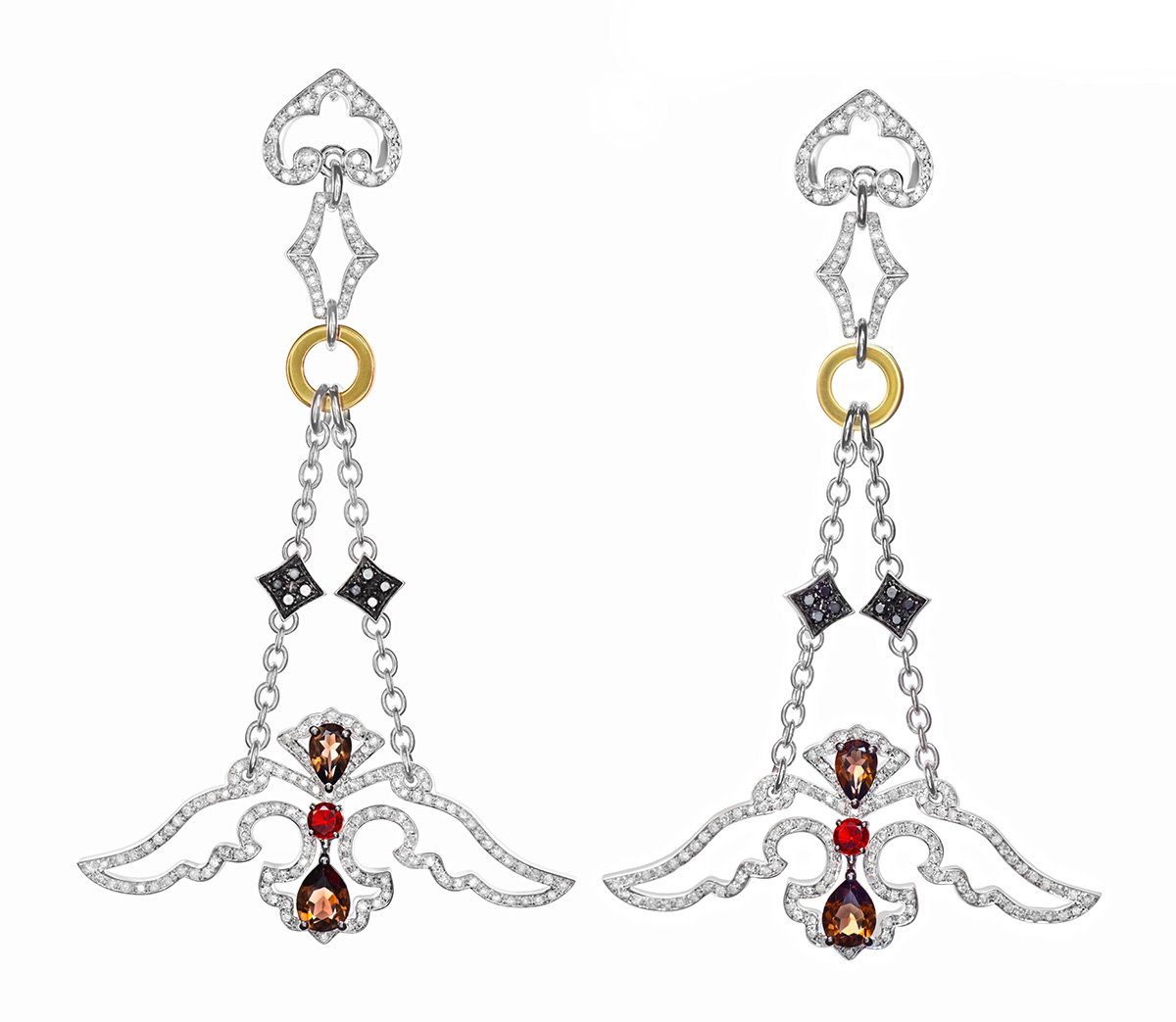
Earrings with wings motif in white and yellow gold with smoky quartz, garnet and icy diamonds
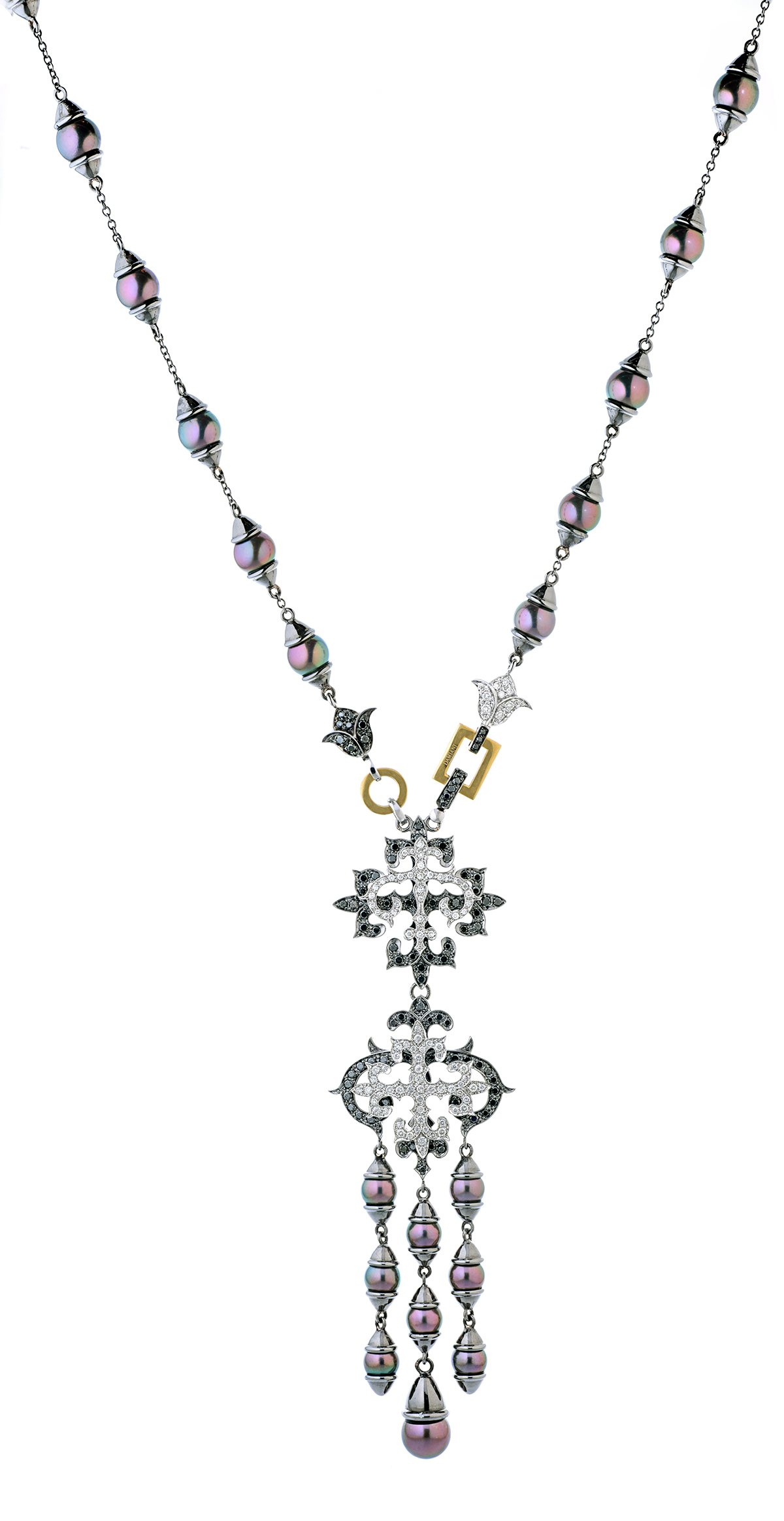
Jewellery from Damiani’s Alsara collection, including necklace in white and yellow gold with black and white diamonds and pearls, inspired by Art Deco and Kazakh ornament



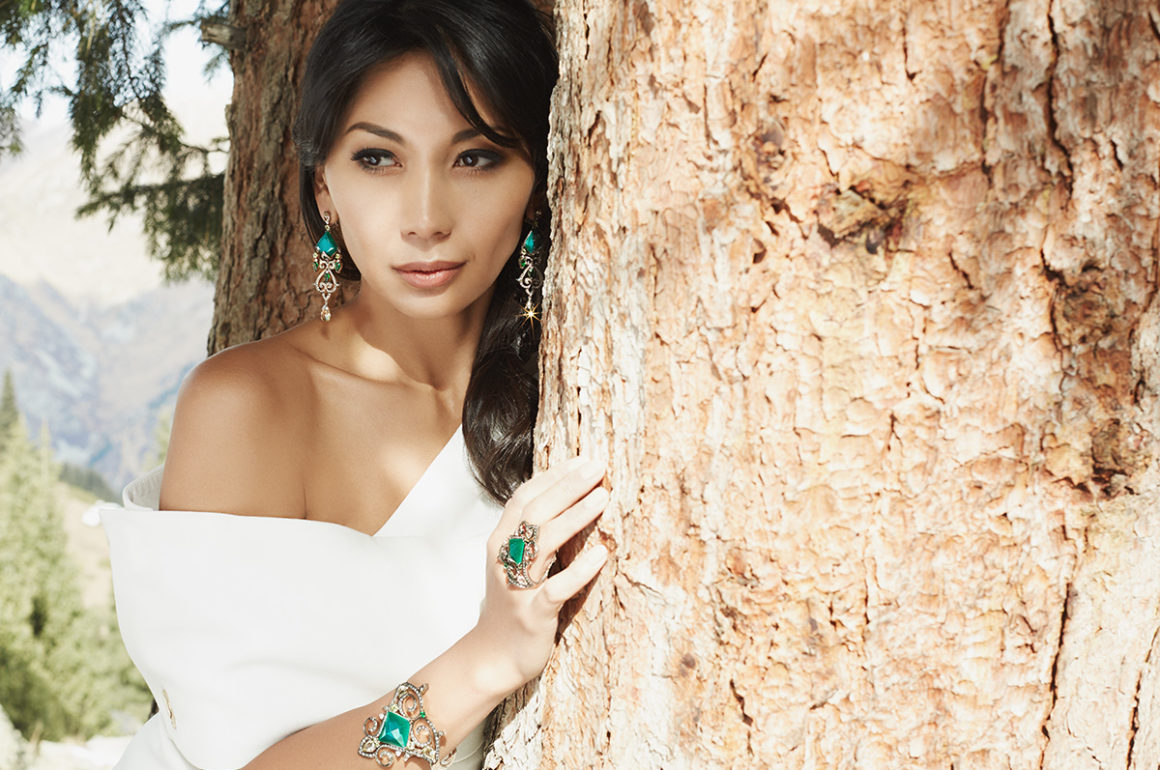
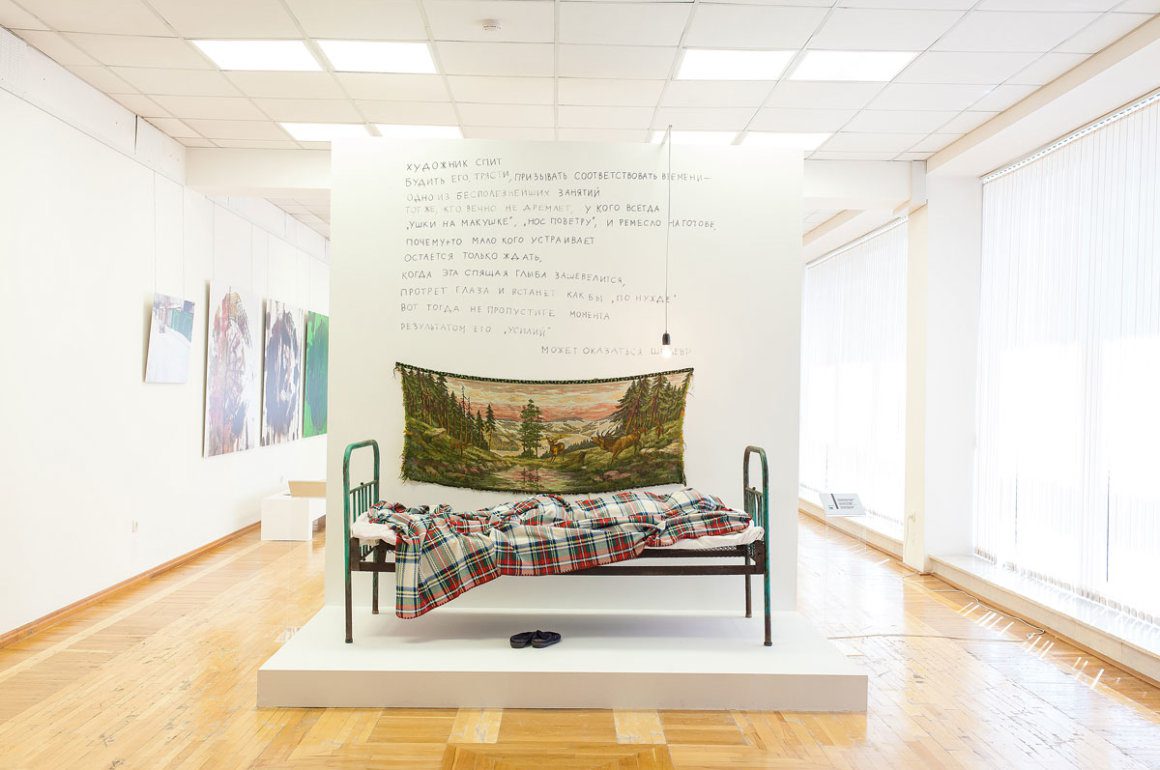
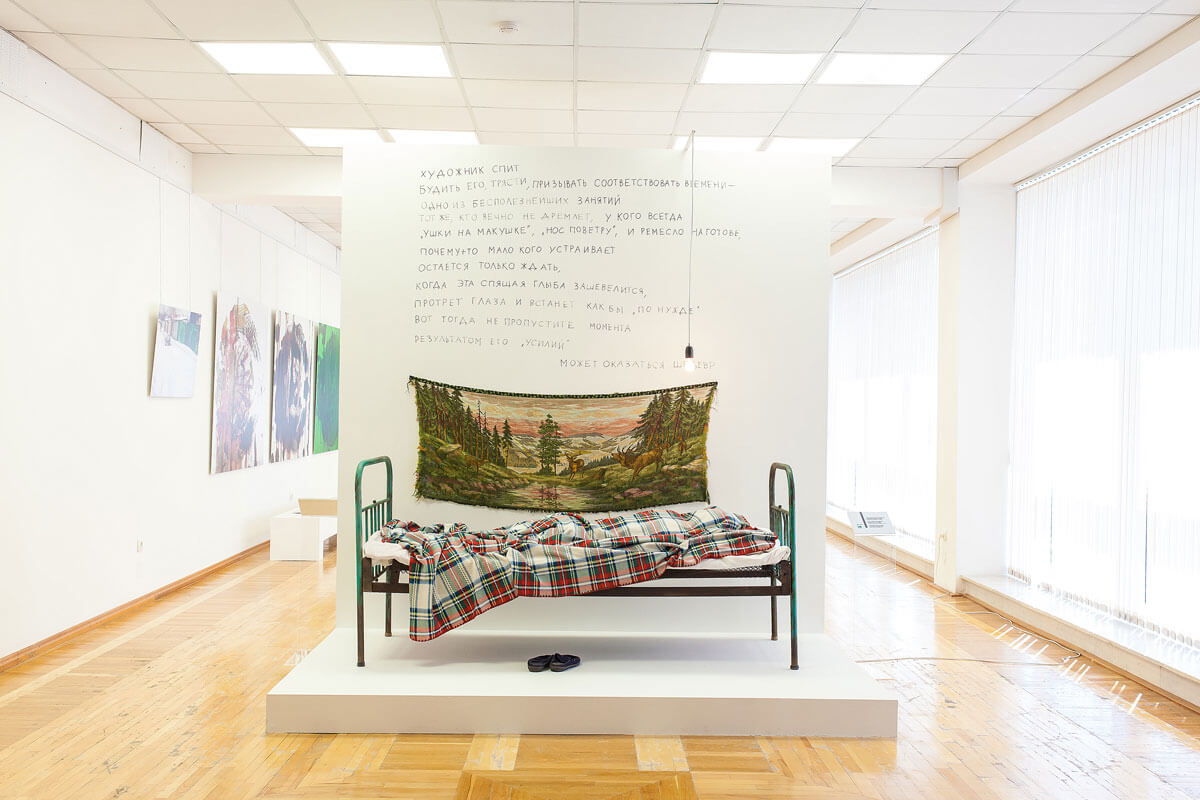
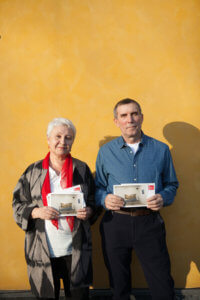






Recent Comments